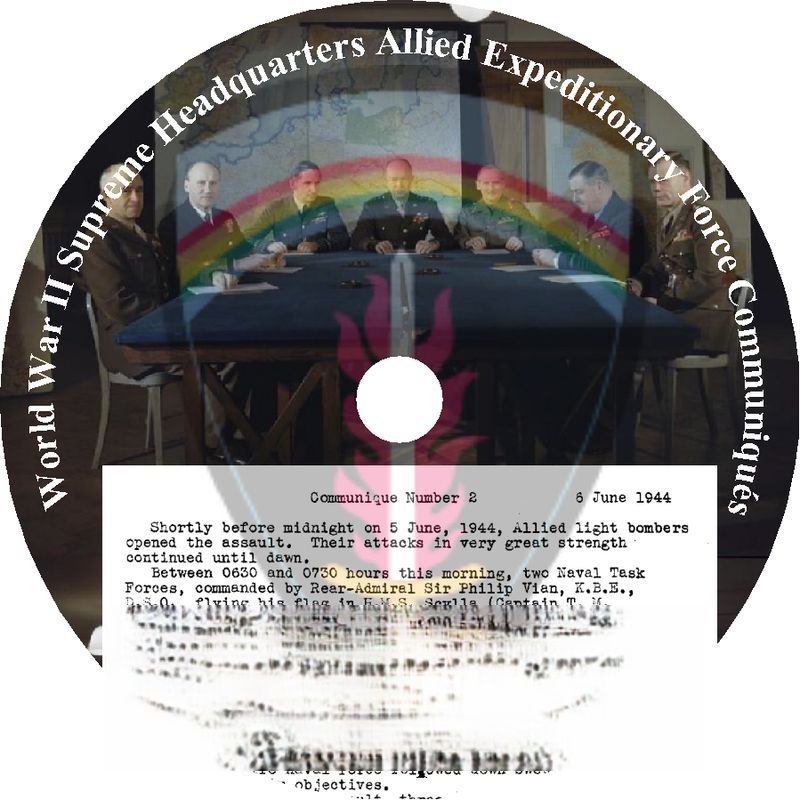
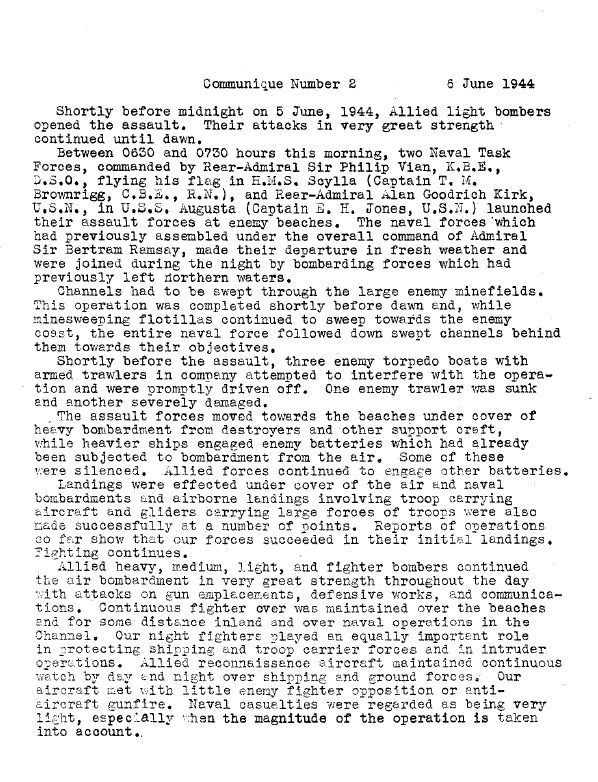
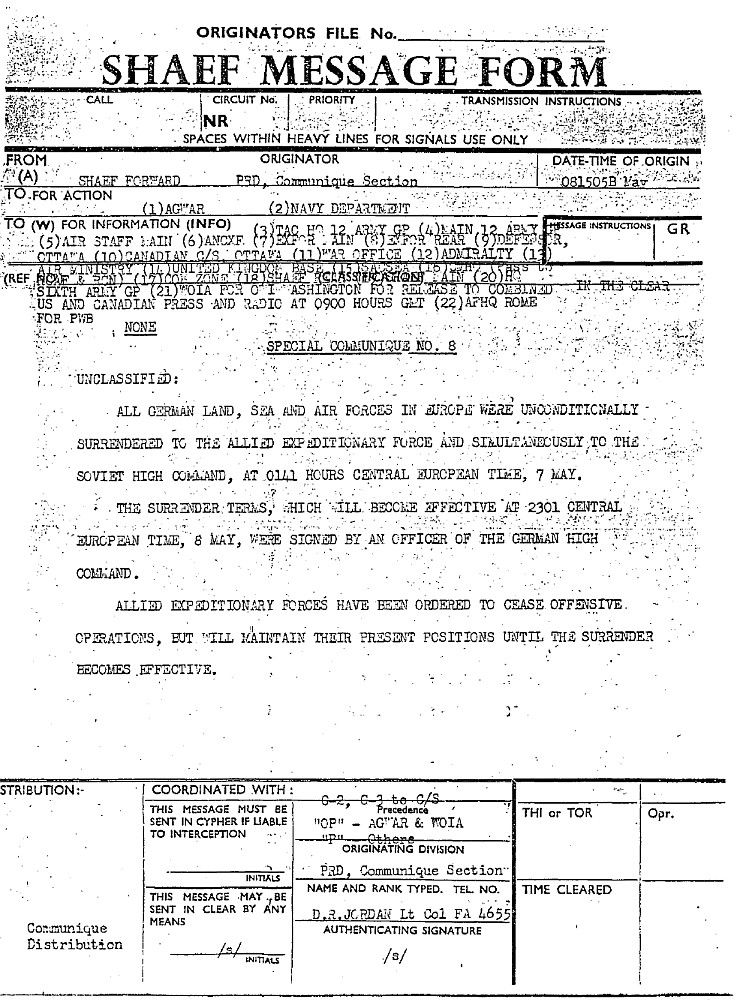
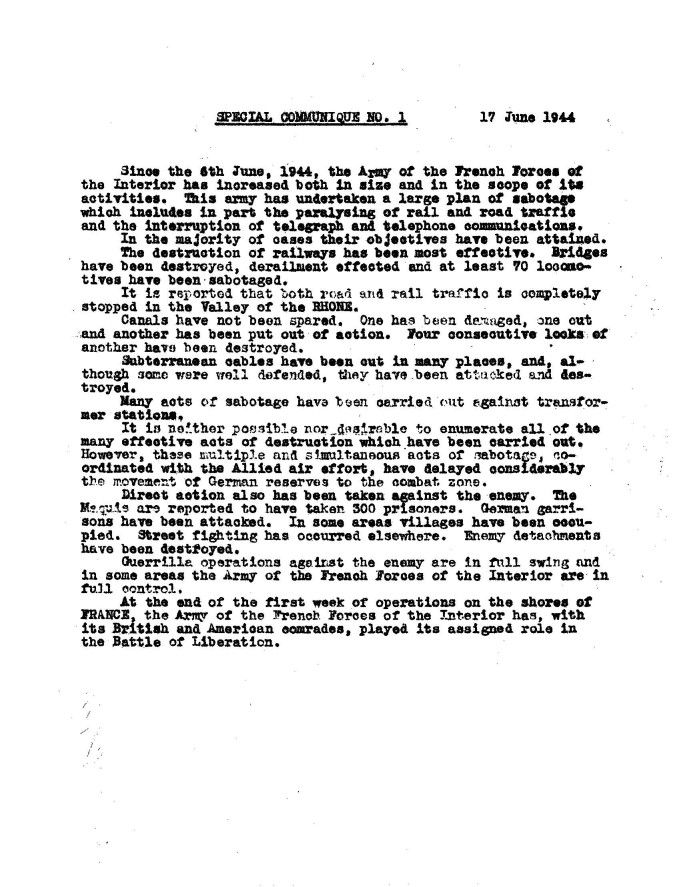
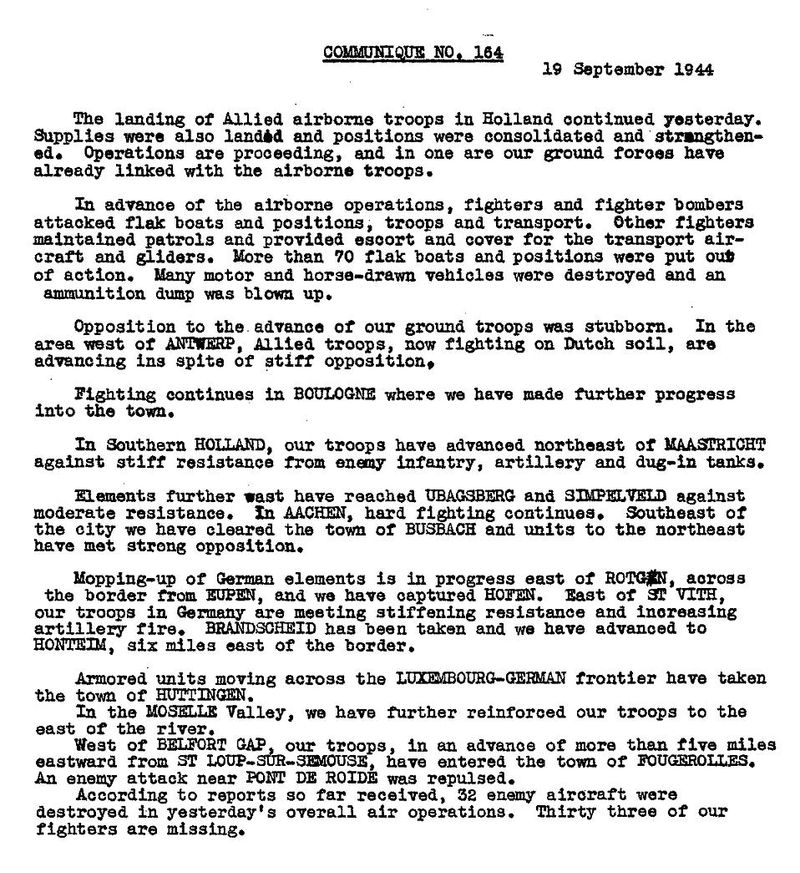
World War II: Communiqués from the Supreme Headquarters Allied Expeditionary Force
$19.50
Description
Allied Victory in Europe: 1944-1945
Timeline of Main Events (June 6, 1944 – May 7, 1945):
- April 1943: The planning group Chief of Staff Supreme Allied Command (COSSAC) is established, tasked with integrating British and American forces for operations in Europe.
- January 1944: General Dwight D. Eisenhower arrives in England from the North African Theater and becomes commanding general of the European Theater of Operations United States Army (ETOUSA).
- February 13, 1944: Supreme Headquarters Allied Expeditionary Force (SHAEF) is created, replacing and absorbing COSSAC.
- June 6, 1944 (D-Day): The Normandy Invasion begins. 155,000 Allied troops land on the beaches of Normandy, France, successfully breaking through the Atlantic Wall.
- June 17, 1944: Free French troops are placed on Elba.
- June 26, 1944: American troops liberate Cherbourg, France.
- August 1944: SHAEF headquarters moves from London to Versailles, France.
- August 25, 1944: Paris is liberated. General De Gaulle and Free French forces parade down the Champs-Élysées.
- August 28, 1944: General Patton’s tanks cross the Marne River.
- September 13, 1944: American troops reach the Siegfried Line (West Wall) of Germany’s defense system.
- November 18, 1944: The Third Army crosses into the German frontier.
- December 16, 1944: The Battle of the Bulge begins as German forces launch their final major offensive in the west through the Ardennes.
- January 1, 1945: German forces begin retreating from the Battle of the Bulge.
- February 13, 1945: The bombing of Dresden occurs.
- March 7, 1945: Patton’s Third Army crosses the Rhine River at Remagen.
- March 20, 1945: Patton’s troops capture Mainz, Germany.
- May 7, 1945: German Chief-of-Staff, General Jodl, signs Germany’s unconditional surrender.
- May 1945: SHAEF headquarters moves from Versailles, France, to Frankfurt, Germany.
- July 14, 1945: SHAEF is discontinued and its civil-affairs and military-government functions are assumed by the Allied Group Control Council in Berlin.
Cast of Characters:
- Dwight D. Eisenhower: Supreme Allied Commander, Allied Expeditionary Forces and Commanding General of the European Theater of Operations United States Army (ETOUSA). He was the overall commander of the Allied forces in the European theater, overseeing the entire operation from D-Day to the German surrender.
- Lieutenant Colonel D. Reed Jordan: Chief of the Communiqué Section, Public Relations Division SHAEF. Responsible for managing the daily battle reports (communiqués) issued by SHAEF.
- Charles De Gaulle: Leader of the Free French forces. He was a key figure in the liberation of France and its post-war government.
- General George S. Patton: A U.S. Army General who commanded the Third Army. Known for his aggressive leadership and rapid advances across France and into Germany.
- General Jodl: German Chief of Staff who signed Germany’s unconditional surrender on May 7, 1945. He represents the top military leadership of Nazi Germany at the end of the war.
World War II: Communiqués from the Supreme Headquarters Allied Expeditionary Force
A collection of 609 pages containing communiqués issued by the Supreme Headquarters Allied Expeditionary Force, commanded by General Dwight D. Eisenhower. These documents span from D-Day on June 6, 1944, to Germany’s capitulation on May 8, 1945, and are sourced from materials located at the Modern Military Records Division of the National Archives and Records Administration.
These daily reports, produced by SHAEF in Europe, served an additional purpose; they informed various branches of the Allied forces about SHAEF’s progress. These communications were not considered secret or confidential.
The main aim of the communiqués was to serve as a reference for press, radio, and newsreel journalists covering events on the battlefield.
The information presented in these bulletins is delivered in a straightforward, business-like manner that focuses purely on factual content.
Lieutenant Colonel D. Reed Jordan, who served as the Chief of the Communiqué Section within the Public Relations Division of SHAEF, stated that “the graphic details of the horror, suffering, and destruction associated with each shell fired and bomb dropped were intentionally left for the skilled news and photo reporters assigned by global media outlets to document the daily devastation of the war.” The initial communiqué was released on the day of the Normandy Invasion to declare the start of the assault. Following that, additional communiqués were issued at 11:00 a.m. and 11:30 p.m. each day. These documents provided overviews of the military activities that occurred since the last communiqué. Later on, the frequency of these updates was decreased to once daily at 11:00 a.m., though special communiqués were still published as necessary. The communiqués were sent to the British media in Europe and to the Office of War Information in the U.S., which then passed them on to journalists in the U.S. and Canada.
These communiqués are included in the SHAEF records at the National Archives in Washington, DC. Initially, they were organized by the SHAEF staff in reverse chronological order. However, once they arrived at the National Archives, the staff reorganized them into chronological order and created a separate file for the special communiqués.
Regarding the Supreme Headquarters Allied Expeditionary Force (SHAEF), it was established on February 13, 1944, to take over from the planning group known as the Chief of Staff Supreme Allied Command (COSSAC), which had been set up in April 1943.
COSSAC and SHAEF were collaborative U.S.-British organizations responsible for coordinating British and American forces for operations in Europe. General Dwight D. Eisenhower was appointed as the Supreme Allied Commander of the Allied Expeditionary Forces, and upon his arrival in England from North Africa in January 1944, he became the commanding general of the European Theater of Operations United States Army (ETOUSA). The staff organizations of SHAEF and ETOUSA were separate entities. Generally, each headquarters had its own staff sections staffed by different personnel. The Chief of Staff led the staff organization in SHAEF. SHAEF oversaw the operations of several subordinate inter-allied headquarters, which included distinct commands for ground, air, and naval operations.
SHAEF was based in London until August 1944; then it moved to Versailles, France, from August 1944 to May 1945; and finally, it was in Frankfurt, Germany, from May to July 1945. On July 14, 1945, SHAEF was dissolved, with its civil-affairs and military-government responsibilities transferred to the Allied Group Control Council in Berlin.
Significant events involving SHAEF include:
On June 6, 1944, D-Day commenced, with 155,000 Allied troops landing on Normandy’s beaches. The Allied forces rapidly breached the Atlantic Wall and advanced inland during the largest amphibious military operation ever conducted.
On June 17, 1944, Free French troops were deployed to Elba.
By June 26, 1944, American forces had arrived at and liberated Cherbourg, France.
On August 25, 1944, following the German surrender of Paris, De Gaulle and Free French troops celebrated with a parade down the Champs-Élysées.
On August 28, 1944, General Patton advanced his tanks across the Marne River.
By September 13, 1944, American troops reached the Siegfried Line, Germany’s western defensive barrier.
On November 18, 1944, the Third Army crossed into German territory.
The Battle of the Bulge began on December 16, 1944, when German forces launched a final offensive attempt in the Ardennes region. By January 1, 1945, the Germans were retreating.
On February 13, 1945, Dresden was bombed.
On March 7, 1945, Patton’s Third Army crossed the Rhine River at Remagen.
On March 20, 1945, Patton’s forces captured Mainz, Germany.
On May 7, 1945, German Chief of Staff General Jodl signed the unconditional surrender of
Related products
-
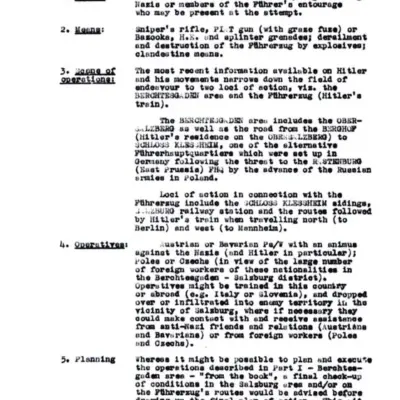
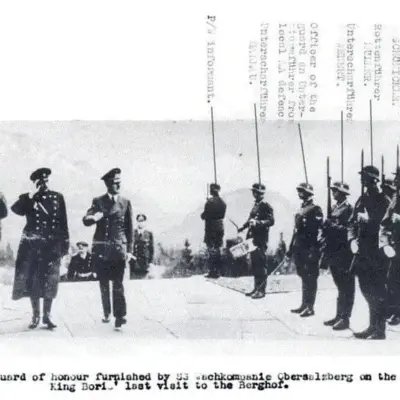
World War II: Adolf Hitler and Operation Foxley – British Assassination Plot
$19.50 Add to Cart -
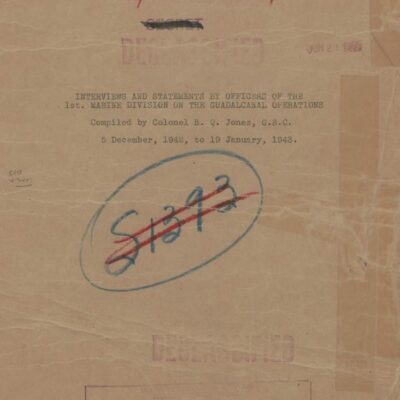
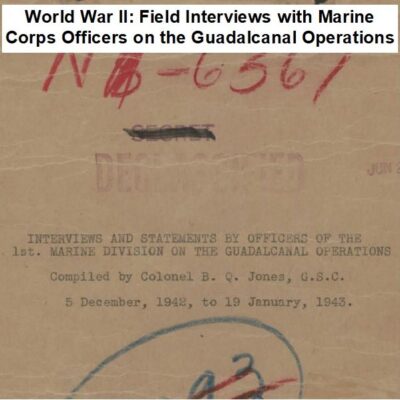
World War II: Marine Corps Officer Interviews on Guadalcanal Operations
$3.94 Add to Cart -
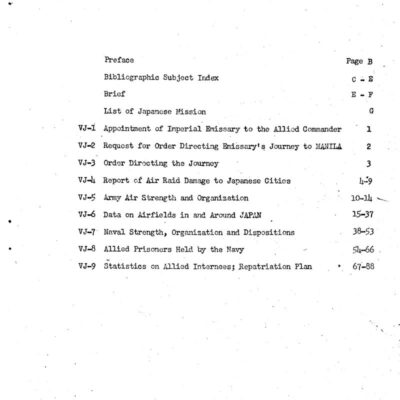
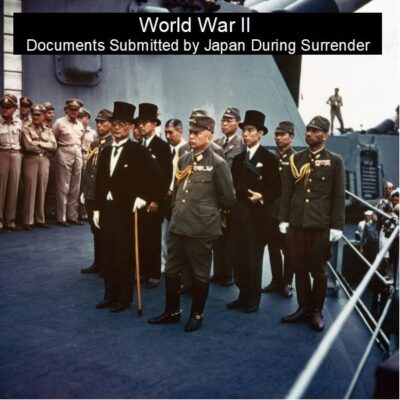
Japan’s Surrender Documents from World War II
$1.99 Add to Cart -
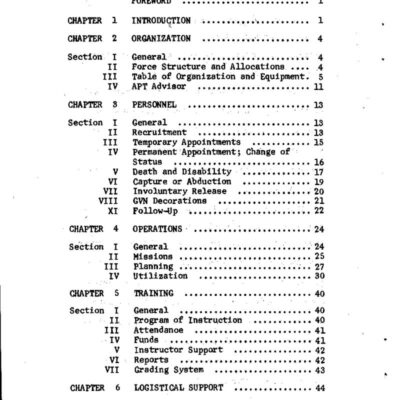
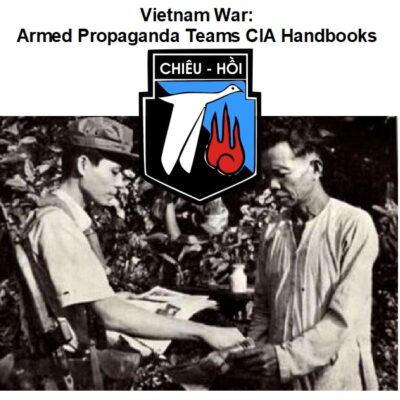
Vietnam War: Armed Propaganda Teams CIA Handbooks
$1.99 Add to Cart